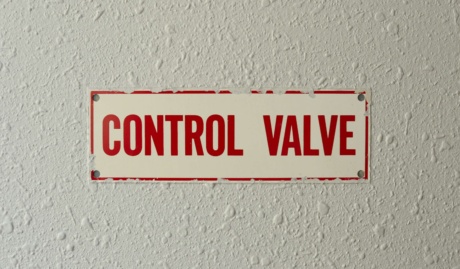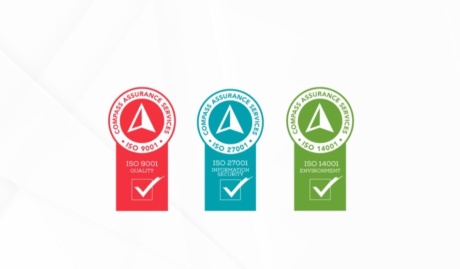“Our strategy is to provide a superior service and charge more than the competition does.”
“Our strategy is cost based…we can service the client cheaper than our competitors can.”
“We use the shotgun strategy. It works well for us.”
“Our strategy is to not grow too fast.”
We have all heard these strategy statements, or ones like them. There are many more where they come from and a significant similarity between them is that none are a strategy on its own.
The point here is that each statement may address a key business function or decision but if it is pursued in isolation or is over emphasised, it may lead to gaps or weaknesses in other areas of the business plan. Business strategists (owners, managers and entrepreneurs) must have an integrated, overarching concept of how the business will achieve its objectives – a strategy. It may seem as though strategy is something for the ‘big corporates’ to worry about, but strategy is just as important for small and medium enterprises – to channel the passion and drive that most small business owners have into positive results.
It is interesting that the word ‘strategy’ is derived from the Greek ‘strategos, or the art of the General’. An important link here is that the General(s) referred to, similar to business leaders, had to orchestrate multiple battles on multiple fronts over extended time frames. They had to resource their army then ensure that all components of their forces were where they had to be, when they had to be, doing what they had to do and complementing each other. Hannibal’s decision to use elephants to cross the alps was not his whole strategy…it was a small part of it.
So where to for help? A search for ‘business strategy’ books on Amazon.com this week resulted in 13,246 listings. Needless to say there is no shortage of reading material available on the subject. Getting straight to the point, an excellent article on the subject is by respected authors Hambrick & Frederickson (2001) who argue that a comprehensive business strategy addresses five elements.
1. ARENAS: Where will we compete?
- Which geographic locations?
- Which market segments?
- Which products or services?
2. VEHICLES: How will we get there?
- Organic growth?
- Joint ventures?
- Franchising?
- Acquisitions?
3. DIFFERENTIATORS: How will we win?
- Price?
- Customisation / differentiation?
- Product reliability?
- Image?
3. STAGING: What will our speed and sequence be?
- In what sequence should our initiatives be undertaken?
- How fast should we grow?
4. ECONOMIC LOGIC: How should we obtain our returns?
- Lowest cost through scale advantages
- Premium price due to unmatchable service?
- Premium price due to patents or proprietary product features?
To illustrate their model, Hambrick & Frederickson map out the strategy of an international furniture retailer. Can you guess who it is?
ARENAS: Where will we compete?
- Inexpensive contemporary furniture.
- Young, white-collar customers.
- Worldwide.
VEHICLES: How will we get there?
- Organic expansion.
- Wholly owned stores.
DIFFERENTIATORS: How will we win?
- Very reliable quality.
- Low price.
- Fun, non-threatening shopping experience.
- Instant fulfilment.
STAGING: What will our speed and sequence be?
- Rapid international expansion, by region.
- Early footholds in each country; fill in later.
ECONOMIC LOGIC: How should we obtain our returns?
- Economies of scale (global, regional and individual-store scale).
- Efficiencies from replication.
I’m sure it will come as no surprise to know that it will take more than answering questions off the top of your head to develop a good strategy. A robust strategy will require the investment of considerable time and effort in analysing your competitors, industry, market trends and customer needs as well as your own capabilities and capacity.
For those of you who would like to test the quality of their strategy Hambrick & Frederickson offer six evaluation criteria:
- Does your strategy fit in with what’s going on in the environment?
Is there a healthy profit potential where you are headed? Does your strategy align the key success factors of your chosen environment? - Does your strategy exploit your key resources?
With your particular mix of resources, does this strategy give you a good head start on competitors? Can you pursue this strategy more economically than competitors? - Will your envisioned differentiation be sustainable?
Will your competitors have difficulty matching you? If not does you strategy specifically include a ceaseless regime of innovation and opportunity creation? - Are the elements of your strategy internally consistant?
Have you made choices of areans, vehicles, differentiators, staging and economic logic? Do they all fit and mutually reinforce each other? - Do you have enough resources to pursue the strategy?
Do you have the money, managerial time and talent, and other capabilities to do all that you envision? Are you sure you are not spreading you resources too thinly, only to be left with a collection of feeble positions? - Is your strategy implementable?
Will your key constituencies allow you to pursue this strategy? Can your organisation make it though the transition? Are you and your management team able and willing to lead the required changes?
Whether you develop your strategy formally or informally, there is no doubt that it will be better for considering each of the five elements.
Good luck.
Reference:
Hambrick, D.C. & Frederickson. J. W., 2001, ‘Are you sure you have a strategy?’, Academy of Management Executive, 1 October, pp. 48-59.

























